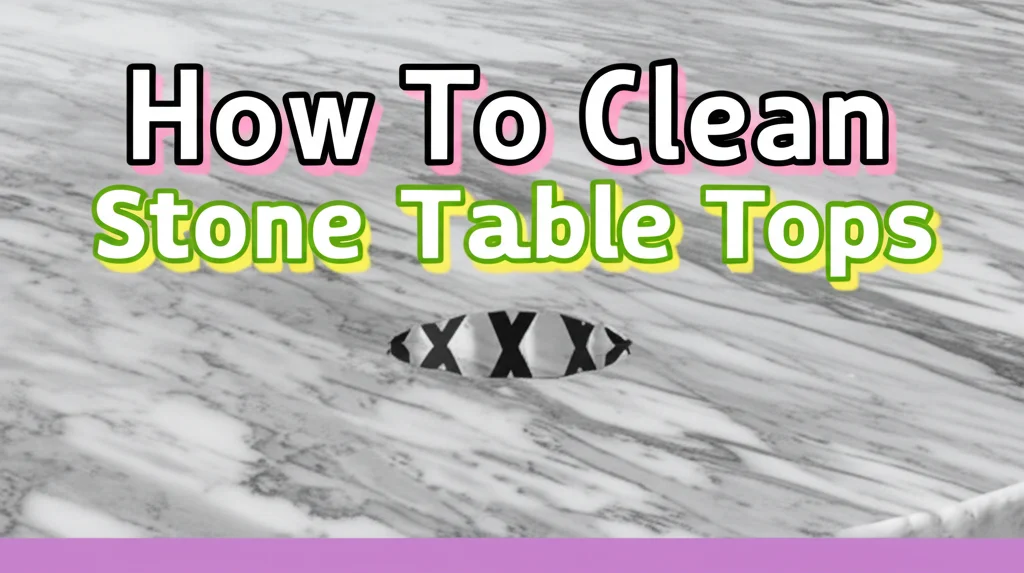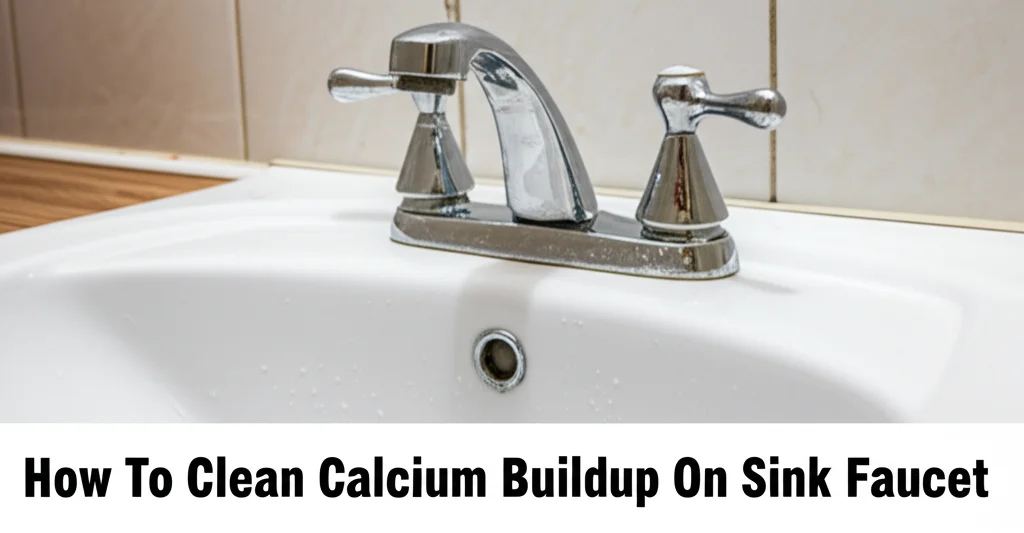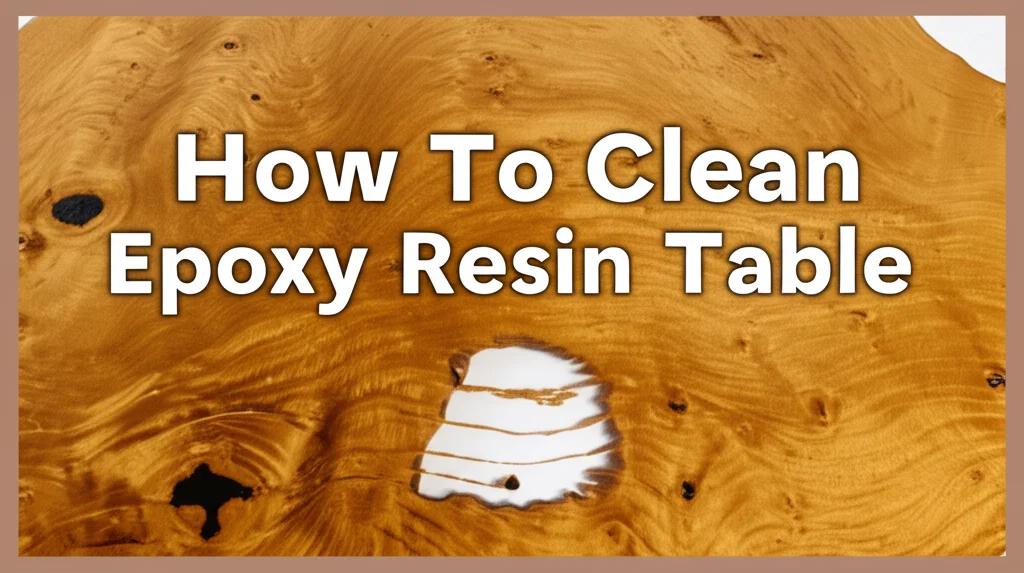· Home Cleaning · 7 min read
How To Clean Stone Table Tops

Keeping Your Stone Table Tops Sparkling Clean
Are your stone table tops looking a little dull? Don’t worry, restoring their shine isn’t as difficult as you might think. Cleaning stone table tops requires a gentle approach to avoid damage, but with the right techniques, you can keep them looking beautiful for years to come. This article will guide you through everything you need to know about cleaning various types of stone, from granite and marble to slate and quartz. We’ll cover daily maintenance, tackling spills, and deep cleaning methods to ensure your stone surfaces remain pristine.
Quick Answer: To clean stone table tops, use a pH-neutral cleaner and a soft cloth. Avoid abrasive cleaners and acidic substances like vinegar or lemon juice. Wipe up spills immediately and seal the stone periodically to protect it from stains.
Takeaway:
- Use pH-neutral cleaners specifically designed for stone.
- Wipe up spills immediately to prevent staining.
- Avoid abrasive cleaners and acidic substances.
- Regular sealing protects your stone surface.
Understanding Your Stone Table Top
Before diving into cleaning, it’s important to identify the type of stone you’re dealing with. Different stones have different levels of porosity and sensitivity to cleaning agents. Knowing your stone will help you choose the right cleaning methods and prevent damage. Here’s a breakdown of common stone table top materials:
- Granite: A very durable and popular choice, granite is relatively resistant to stains and scratches. However, it still requires sealing to prevent oil and water absorption.
- Marble: A luxurious and elegant option, marble is softer and more porous than granite. It’s prone to etching from acidic substances and requires more careful cleaning.
- Slate: A natural and rustic choice, slate is durable but can be porous. It’s best to avoid harsh chemicals and abrasive cleaners.
- Quartz: An engineered stone, quartz is non-porous and highly resistant to stains and scratches. It’s a low-maintenance option that’s easy to clean.
- Limestone: A sedimentary rock, limestone is porous and susceptible to etching. It requires gentle cleaning and regular sealing.
Daily Maintenance for Stone Table Tops
Consistent daily maintenance is the key to keeping your stone table tops looking their best. A quick wipe-down after each use can prevent buildup and make deep cleaning less frequent. This simple habit will save you time and effort in the long run. Here’s what you should do daily:
- Dust Regularly: Use a soft, dry cloth to remove dust and debris. This prevents scratches and keeps the surface looking clean.
- Wipe Up Spills Immediately: Don’t let spills sit! Quick action prevents staining, especially with porous stones like marble and limestone. Use a clean cloth to blot (not rub) the spill.
- Use Coasters and Placemats: Protect your stone from heat, scratches, and spills by using coasters under drinks and placemats under dishes.
- Avoid Harsh Chemicals: Steer clear of abrasive cleaners, vinegar, lemon juice, and ammonia-based products. These can damage the stone’s surface. You can find more information on avoiding harmful chemicals here.
Choosing the Right Cleaning Products
Selecting the right cleaning products is crucial for preserving the beauty of your stone table top. Using the wrong cleaner can cause etching, discoloration, or even permanent damage. Always opt for products specifically designed for stone surfaces. Here’s a guide:
- pH-Neutral Cleaners: These are the safest option for most stone types. They won’t damage the surface or alter its color. Look for cleaners labeled “stone cleaner” or “granite cleaner.”
- Stone-Specific Cleaners: Different stones may benefit from specialized cleaners. For example, marble requires a cleaner specifically formulated for its delicate surface.
- Dish Soap (Mild): In a pinch, a very diluted solution of mild dish soap and warm water can be used. However, rinse thoroughly to remove any residue.
- Avoid Abrasive Cleaners: Never use scouring powders, steel wool, or abrasive pads. These will scratch the stone’s surface.
- Avoid Acidic Cleaners: Vinegar, lemon juice, and other acidic substances can etch and dull the stone.
Deep Cleaning Your Stone Table Top
Even with regular maintenance, your stone table top will benefit from a deep cleaning every few months. This will remove stubborn stains and restore its shine. Here’s a step-by-step guide:
- Clear the Surface: Remove all items from the table top.
- Dust and Sweep: Remove loose dirt and debris with a soft cloth or brush.
- Apply Stone Cleaner: Spray the stone cleaner onto the surface, following the manufacturer’s instructions.
- Let it Sit: Allow the cleaner to sit for a few minutes to loosen dirt and grime.
- Wipe Clean: Use a clean, soft cloth to wipe the surface in a circular motion.
- Rinse Thoroughly: Rinse the surface with clean water to remove any cleaner residue.
- Dry with a Clean Cloth: Dry the surface with a clean, dry cloth to prevent water spots. If you’re looking for tips on drying surfaces quickly, you might find this article helpful https://www.beacleaner.com/how-to-remove-baking-soda-residue-from-tile/.
Dealing with Specific Stains
Different types of stains require different approaches. Here’s how to tackle some common stains on stone table tops:
- Oil-Based Stains (Grease, Cooking Oil): Apply a poultice made of baking soda and water. Let it sit for several hours, then wipe clean.
- Water Stains: These are usually superficial and can be removed with a stone cleaner. For stubborn water stains, try a poultice of baking soda and water.
- Coffee and Tea Stains: Use a stone cleaner or a poultice of baking soda and water.
- Wine Stains: Blot up as much wine as possible immediately. Then, apply a poultice of baking soda and water.
- Ink Stains: Try rubbing alcohol on a cotton ball, gently blotting the stain. Rinse thoroughly with water.
Sealing Your Stone Table Top
Sealing your stone table top is essential for protecting it from stains and damage. Sealers create a barrier that prevents liquids from penetrating the stone. The frequency of sealing depends on the type of stone and how heavily it’s used.
- Granite: Seal every 1-2 years.
- Marble: Seal every 6-12 months.
- Slate: Seal every 1-2 years.
- Quartz: Generally doesn’t require sealing.
- Limestone: Seal every 6 months.
To test if your stone needs sealing, place a few drops of water on the surface. If the water beads up, the stone is sealed. If the water absorbs into the stone, it’s time to reseal. You can learn more about protecting your floors with sealing https://www.beacleaner.com/how-to-clean-hardwood-floors-with-vinegar/.
Frequently Asked Questions (FAQ)
Q: Can I use vinegar to clean my stone table top? A: No, vinegar is acidic and can etch and damage many types of stone, especially marble and limestone. Always use a pH-neutral cleaner specifically designed for stone.
Q: How often should I clean my stone table top? A: Daily dusting and wiping up spills immediately are essential. A deep cleaning every few months will keep it looking its best.
Q: What is a poultice? A: A poultice is a paste made of absorbent material (like baking soda) and a liquid (like water) that draws stains out of porous materials like stone.
Q: How do I know if my stone is sealed? A: Place a few drops of water on the surface. If the water beads up, the stone is sealed. If it absorbs, it needs resealing.
Q: Can I use a steam mop on my stone table top? A: While some quartz surfaces can tolerate steam cleaning, it’s generally not recommended for most natural stones like granite and marble. The heat and moisture can potentially damage the stone or the sealant.
Conclusion
Cleaning stone table tops doesn’t have to be a daunting task. By understanding your stone type, using the right cleaning products, and following a regular maintenance routine, you can keep your surfaces looking beautiful for years to come. Remember to always prioritize gentle cleaning methods and avoid harsh chemicals. Protecting your investment with regular sealing is also key. With a little care, your stone table top will remain a stunning focal point in your home. For more cleaning tips and tricks, explore our other articles on Beacleaner.com! Don’t forget to check out our guide on cleaning different floor types https://www.beacleaner.com/how-to-clean-luxury-vinyl-plank-flooring/ to keep your entire home sparkling.




